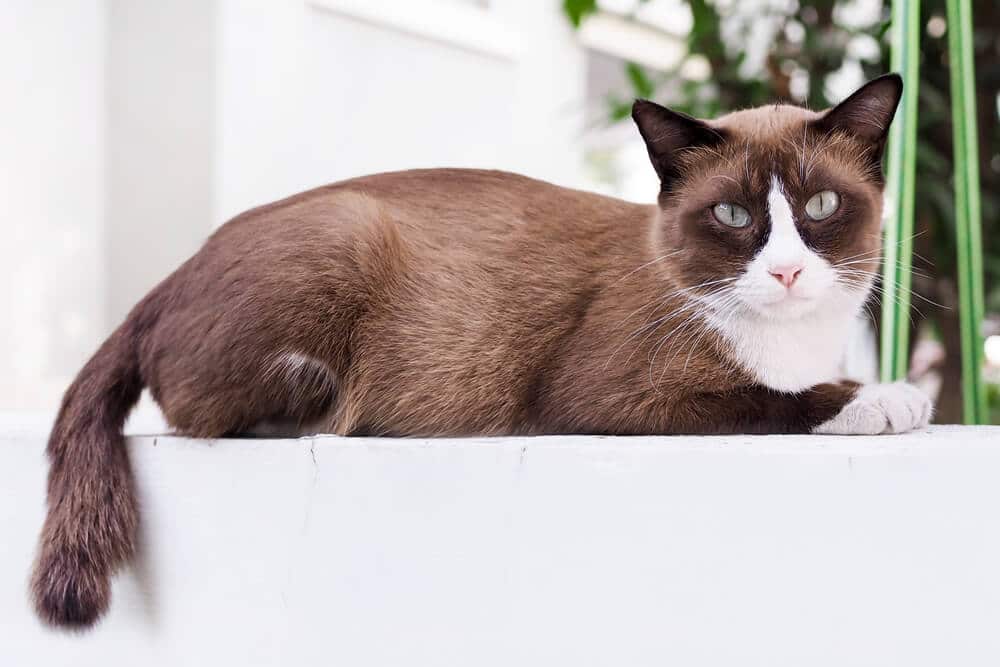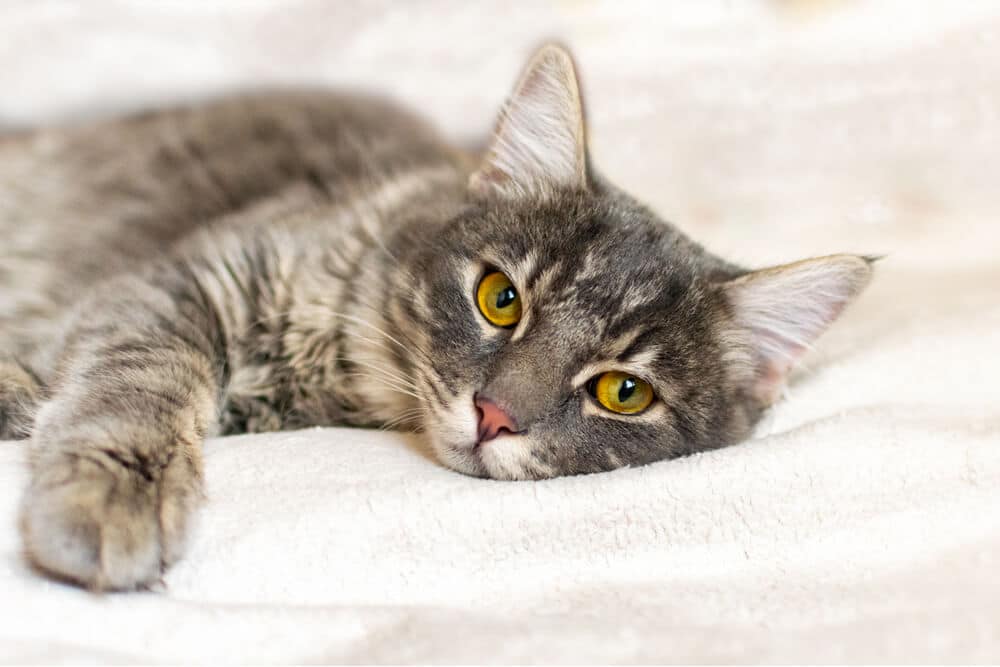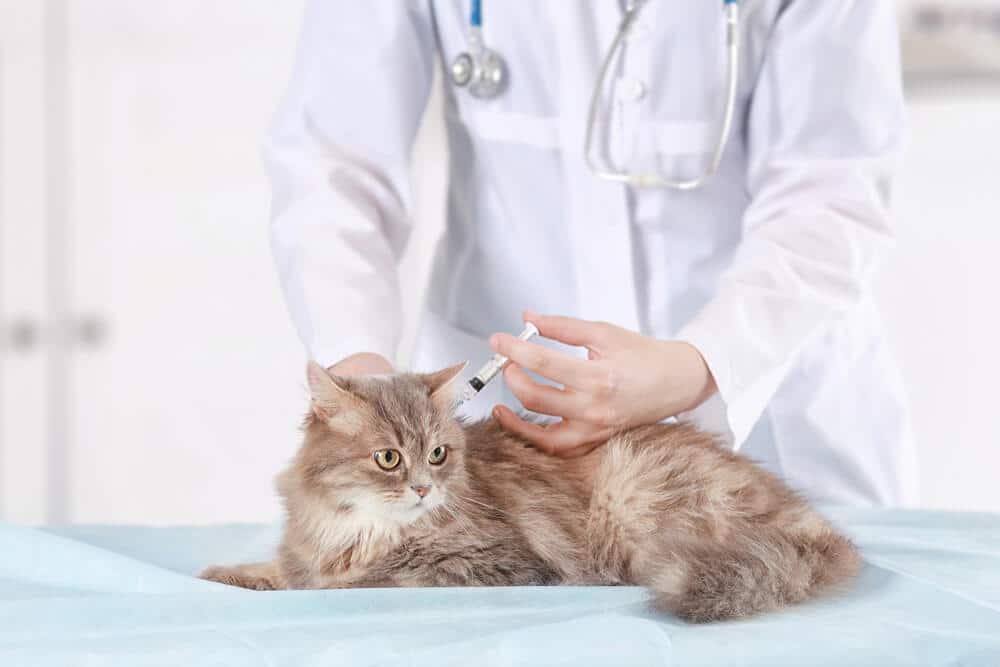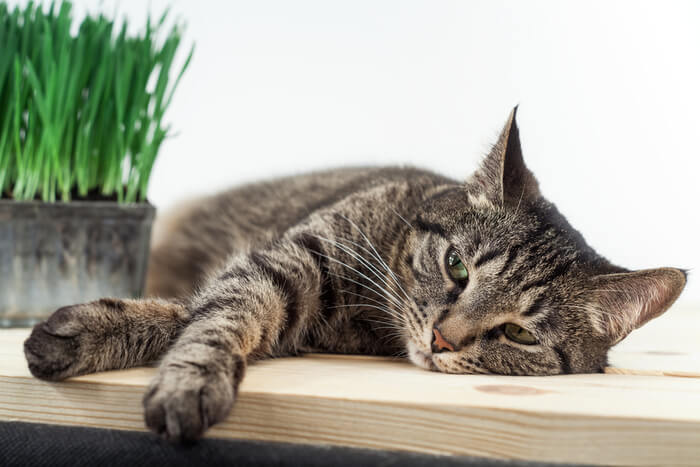
Many cat owners will have heard about Feline Leukemia, a common disease caused by a feline leukemia virus infection. But many carers may not be clear about what it is, how it can pose a threat to their pet, or what they can do to make sure that their pet is protected.
What Is Feline Leukemia?
Feline Leukemia is a form of cancer where the bone marrow and other blood-forming organs produce increased numbers of immature or abnormal white blood cells, as well as affecting other organs in different ways.
The disease affects only cats and is caused by an infectious virus called Feline Leukemia Virus FeLV. FeLV is is a so-called retrovirus, a group of viruses that can cause cancer and other diseases in several different species, including humans.
How Common Is Feline Leukemia?
The incidence of Feline Leukaemia varies by location, but in general, around 1-2% of healthy cats are infected. The infection is more common in multi-cat households, sick cats, cats that live outdoors, and it’s seen more often in males than females.
How Do Cats Get Feline Leukemia?
The virus is transmitted from cat to cat through close social contact, including mutual grooming, sharing food bowls and litter boxes or trays, and close physical contact such as sleeping together.
The virus is present in the saliva and nasal secretions of infected cats, as well as the feces and urine. The virus cannot survive for long in the environment which is why infection is primarily passed on by direct cat to cat contact. The virus can also be passed to kittens in the womb or via the milk in the first weeks of life.
What Happens When a Cat Picks up Feline Leukemia Infection?
Exposure to FeLV does not necessarily cause serious problems. There are three main types of reactions to the virus.
- Some cats are able to eliminate the virus effectively via their own immune reaction, and will subsequently be immune to the disease.
- Other cats are able to contain the infection, but not to eliminate it completely: these cats remain healthy and do not shed the virus.
- Other cats are unable to deal with the virus effectively, developing a persistent infection, with the virus constantly circulating in their blood (and saliva), and they are very likely to go on to develop FeLV related disease. This is the main group of concern.
A small number of cats develop in-between immune responses, not fitting neatly into any of the three categories above.
Feline Leukemia Signs and Symptoms

Cats with Feline Leukemia become immunocompromised, which may lead to a range of secondary health issues.
The main effect of persistent FeLV infection is the suppression of the cat’s immune system. This has a number of effects on the cat’s body.
Feline leukemia may cause the following:
- Chronic, recurrent secondary infections, such as gingivitis or stomatitis, cystitis, skin disease, respiratory conditions, and gastrointestinal disturbances.
- Typical clinical signs seen by an owner may be a dull cat, with a dry, poor coat, a high temperature, poor appetite, and weight loss.
- The other main effects are severe anemia and multi-focal cancer affecting lymph nodes and other internal organs, causing a range of other signs of illness.
Feline Leukemia Test
Most vets offer an in-house so-called “ELISA blood test”, which detects a protein that’s consistently found in the blood of cats persistently infected with the virus.
These tests are rapid, reliable, and cost-effective. A combined test is available, including Feline Immunodeficiency Virus (FIV), a different virus that often needs to be ruled out when investigating sick cats.
This instant test is a useful screening procedure, but there is a low incidence of false positives and false negatives (i.e. some cats test positive on the test when they are not infected, and other cats test negative when in fact they do have the FeLV virus.)
For this reason, if an unexpected result is obtained, and in some other cases, an extra test needs to be sent to an external laboratory.
Other, more specialized, more accurate, tests are then done to absolutely confirm the status of the cat, either testing for the virus itself, the IFA test to identify specific viral proteins in the cat’s blood cells, or a PCR test to identify specific genetic material from the FeLV virus.
Positive results are not always the final word. Sometimes a follow-up test is needed, 3 – 4 months later, to confirm the long term status of the cat.
How Much Does a Feline Leukemia Test Cost?
The cost of the FeLV test varies depending on where you live and which type of testing you choose. At the low end, the test may cost $25 to $50, with more complex tests costing $50 to $100 or more.
Feline Leukemia Treatment
FeLV cannot be completely cured, so treatment is supportive and palliative.
The following measures can help to keep your FeLV positive cat as healthy as possible:
- Effective prevention of worms, fleas and other viral diseases, as FeLV positive cats will be more prone to problems because of their compromised immune system.
- Good quality nutrition, avoiding raw food because of the increased risk of exposure to bacteria.
- Regular visits to the vet to ensure that there are no hidden signs of underlying problems.
- A blood transfusion may be recommended in some cases.
- If a cat develops cancerous growths due to the FeLV virus, chemotherapy may be given.
- Medications sometimes used to treat infected catsinclude Interferon, AZT (azidothymidine) and raltegravir but the therapeutic impact seems to be marginal.
- FeLV positive cats should be kept indoors, away from any cats that are not vaccinated against the virus.
Control of FeLV Infection – Feline Leukemia Vaccine

The Feline Leukemia vaccine can help to prevent cats from catching and transmitting the virus.
An effective FeLV vaccine is available. Kittens are most vulnerable to picking up the virus, so ideally all kittens should be vaccinated unless their carers are certain that they will not encounter cats that are carrying the virus (e.g. indoor-only cats).
Repeated vaccinations for adult cats should be given after a review of thecat’s riske.g. indoor-only cats will be very low risk, while cats that go outdoors and socialize with other cats will have a relatively high risk.
Feline Leukemia Vaccine Side Effects
Most cats show no visible side effects after vaccination against Feline Leukemia, but like any vaccine, there is a low incidence of complications that can include swelling at the vaccine site, and rarely, cancer at the site of vaccination, months or years later.
For this reason, veterinarians may give the vaccine on the limb, rather than in the usual location of the back of the neck. This is in case of the rare eventuality of cancer developing at the vaccine site since in such cases, a limb location can be more successfully treated than a back-of-neck location.
Final Stages of Feline Leukemia

Lymphomas most commonly develop in the gastrointestinal tract, but they can develop throughout the body.
Ultimately, FeLV is a fatal disease. For a persistently infected cat, the prognosis is very guarded. In one study FeLV infected cats survived on average around 2.5 years after their infection was diagnosed, compared with around 6.5 years for similarly aged uninfected cats.







